Abstract
The cognitive function and psychomotor performance of 10 healthy male volunteers were measured following single oral doses of: zopiclone (7.5 mg), flurazepam (15 mg), lormetazepam (1 mg), triazolam (0.25 mg) and placebo. The performance tests selected (stroop task, five choice serial reaction time, memory span, logical reasoning, mood and saccadic eye movement analysis) were thought to reflect aspects of normal daily activity. The tests demonstrated a clear reduction of performance for all active treatments. No drug emerged as the most potent sedative overall, as each of the tests was affected to a different degree by each drug. Drug effects were not qualitatively different between active treatments so that zopiclone was indistinguishable from the three benzodiazepines with which it was compared.
Full text
PDF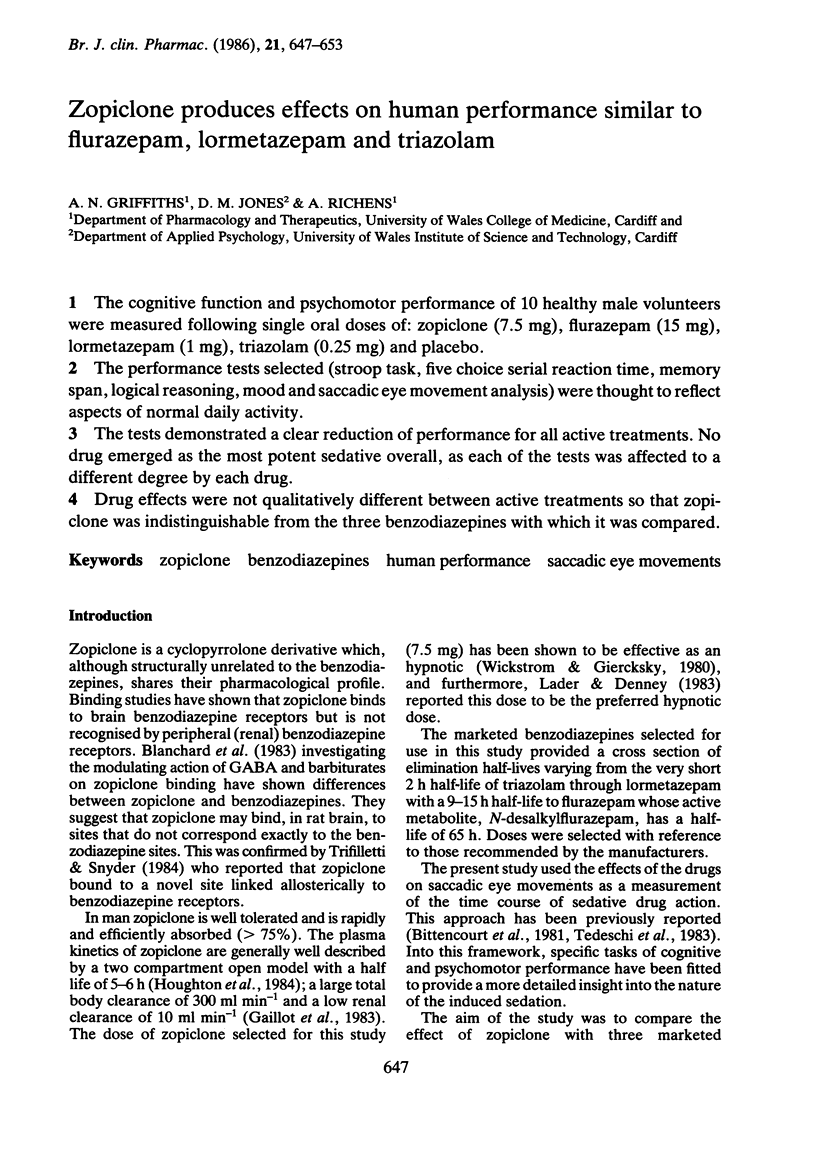
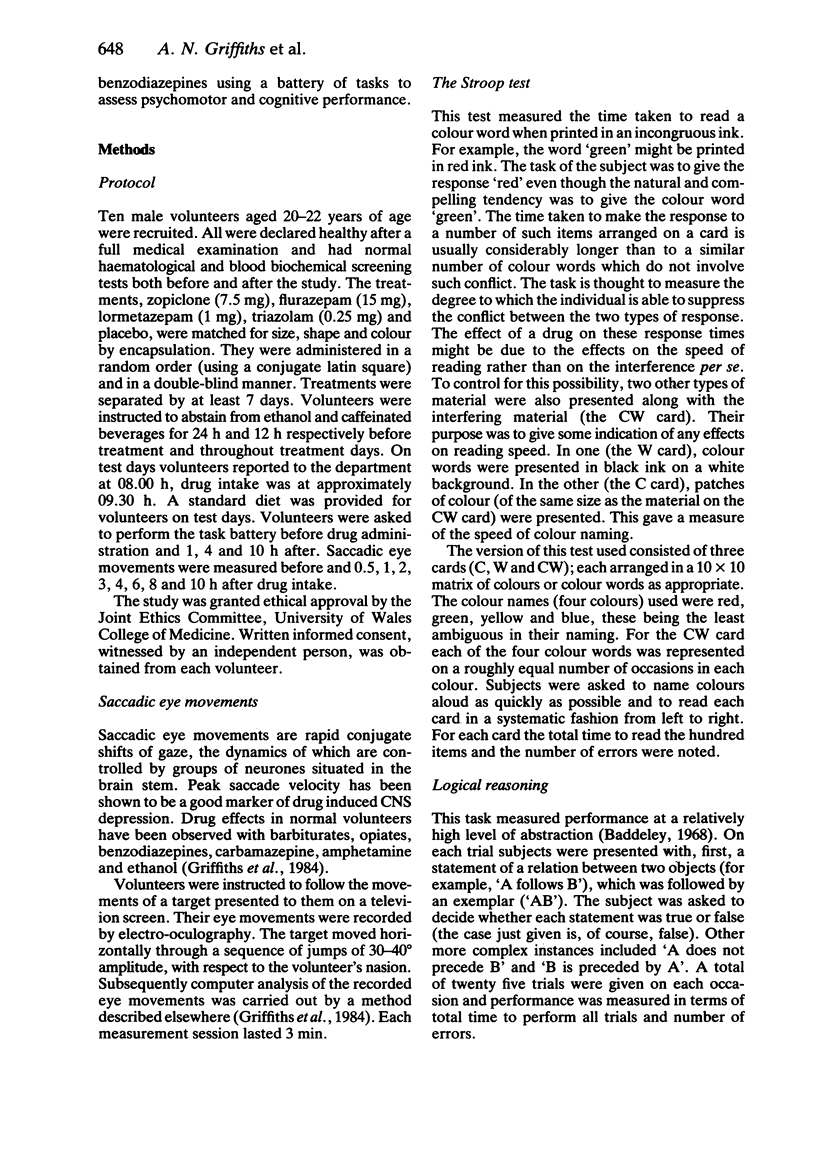
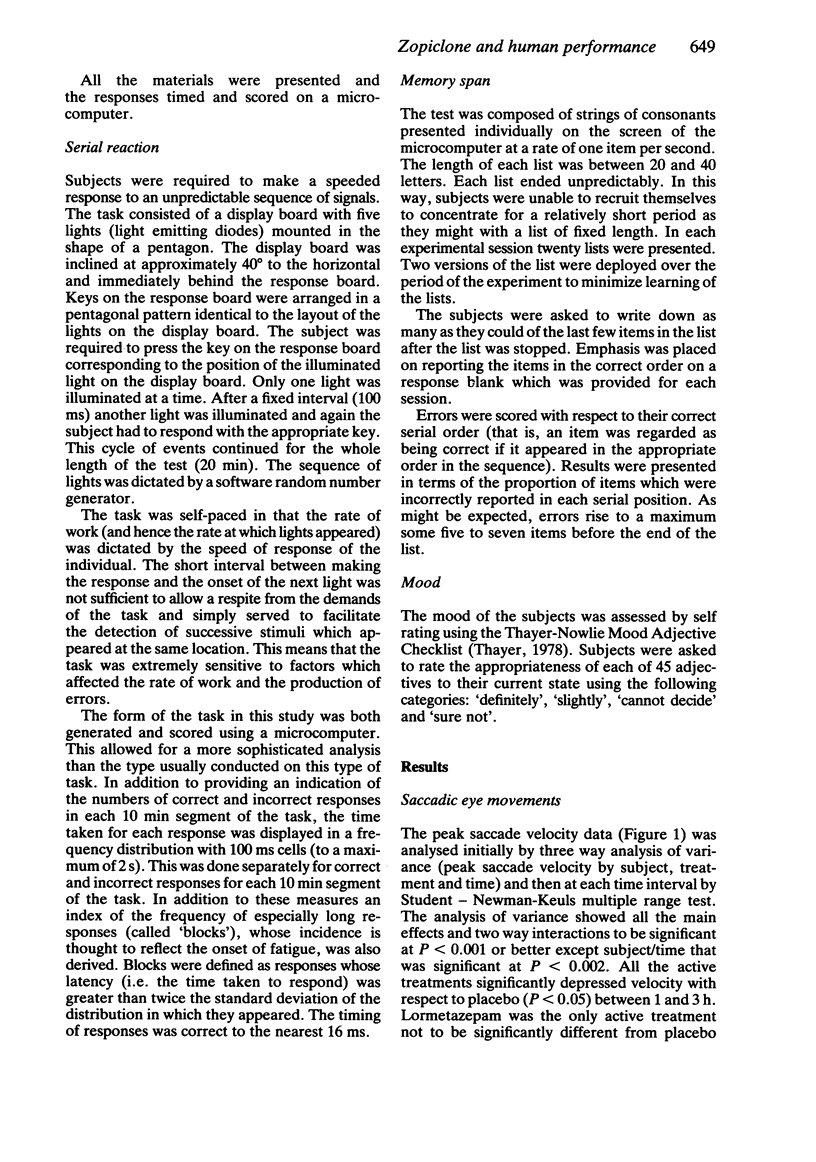
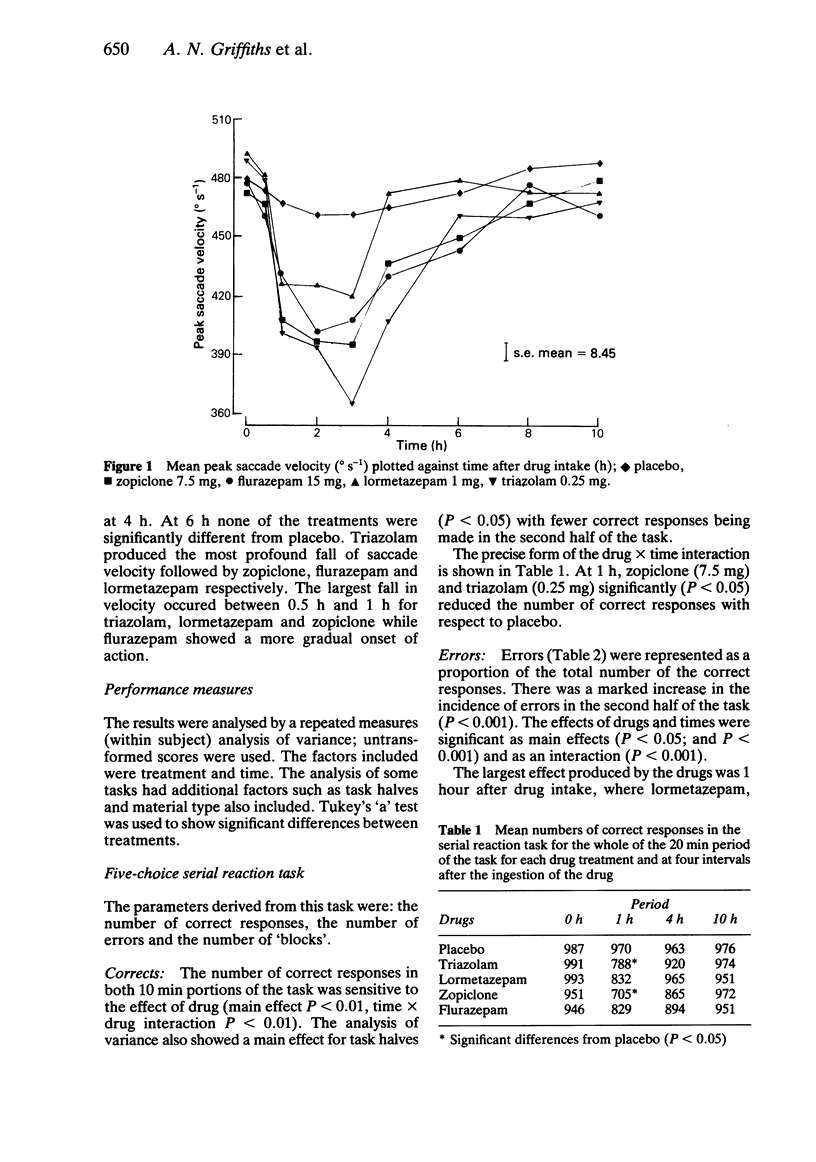
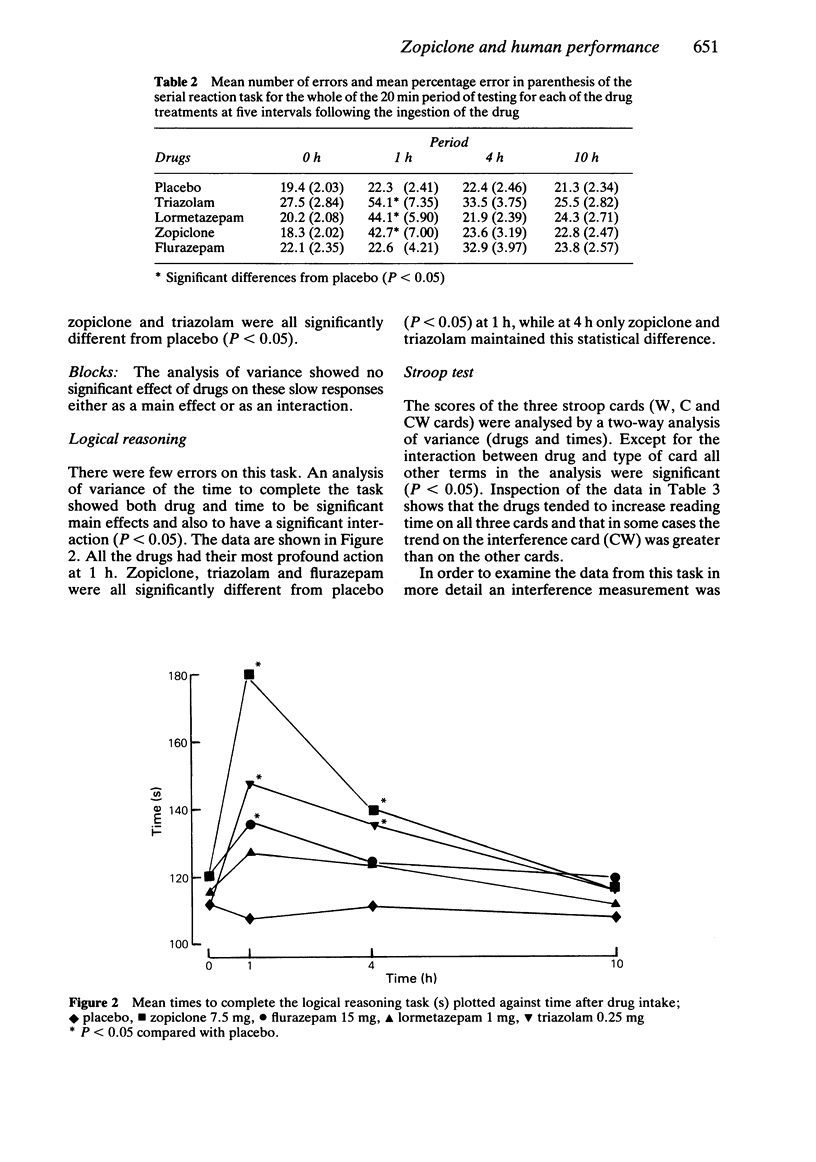
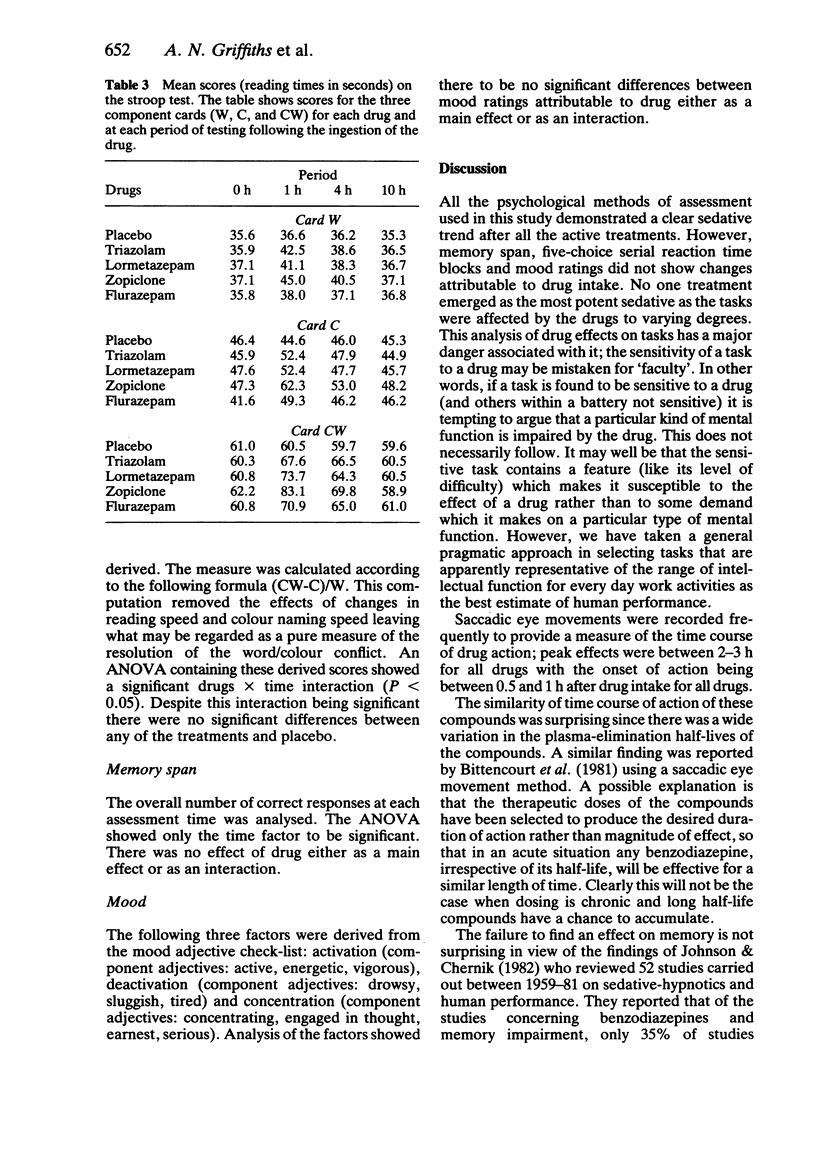

Selected References
These references are in PubMed. This may not be the complete list of references from this article.
- Bittencourt P. R., Wade P., Smith A. T., Richens A. The relationship between peak velocity of saccadic eye movements and serum benzodiazepine concentration. Br J Clin Pharmacol. 1981 Oct;12(4):523–533. doi: 10.1111/j.1365-2125.1981.tb01261.x. [DOI] [PMC free article] [PubMed] [Google Scholar]
- Griffiths A. N., Marshall R. W., Richens A. Saccadic eye movement analysis as a measure of drug effects on human psychomotor performance. Br J Clin Pharmacol. 1984;18 (Suppl 1):73S–82S. doi: 10.1111/j.1365-2125.1984.tb02584.x. [DOI] [PMC free article] [PubMed] [Google Scholar]
- Houghton G. W., Dennis M. J., Templeton R., Martin B. K. A repeated dose pharmacokinetic study of a new hypnotic agent, zopiclone (Imovane). Int J Clin Pharmacol Ther Toxicol. 1985 Feb;23(2):97–100. [PubMed] [Google Scholar]
- Jensen A. R., Rohwer W. D., Jr The Stroop color-word test: a review. Acta Psychol (Amst) 1966;25(1):36–93. doi: 10.1016/0001-6918(66)90004-7. [DOI] [PubMed] [Google Scholar]
- Johnson L. C., Chernik D. A. Sedative-hypnotics and human performance. Psychopharmacology (Berl) 1982;76(2):101–113. doi: 10.1007/BF00435262. [DOI] [PubMed] [Google Scholar]
- Tedeschi G., Smith A. T., Dhillon S., Richens A. Rate of entrance of benzodiazepines into the brain determined by eye movement recording. Br J Clin Pharmacol. 1983 Jan;15(1):103–107. doi: 10.1111/j.1365-2125.1983.tb01471.x. [DOI] [PMC free article] [PubMed] [Google Scholar]
- Thayer R. E. Factor analytic and reliability studies on the Activation-Deactivation Adjective Check List. Psychol Rep. 1978 Jun;42(3 Pt 1):747–756. doi: 10.2466/pr0.1978.42.3.747. [DOI] [PubMed] [Google Scholar]
- Trifiletti R. R., Snyder S. H. Anxiolytic cyclopyrrolones zopiclone and suriclone bind to a novel site linked allosterically to benzodiazepine receptors. Mol Pharmacol. 1984 Nov;26(3):458–469. [PubMed] [Google Scholar]
- Wickstrøm E., Amrein R., Haefelfinger P., Hartmann D. Pharmacokinetic and clinical observations on prolonged administration of flunitrazepam. Eur J Clin Pharmacol. 1980;17(3):189–196. doi: 10.1007/BF00561899. [DOI] [PubMed] [Google Scholar]


